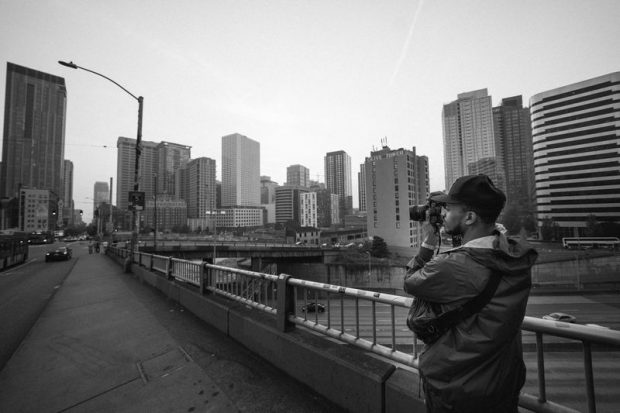What Does Framing Streets Do?
What Does Framing Streets Do?
Blog Article
Some Known Factual Statements About Framing Streets
Table of ContentsFraming Streets Can Be Fun For EveryoneSome Ideas on Framing Streets You Need To KnowAn Unbiased View of Framing StreetsWhat Does Framing Streets Mean?Some Known Incorrect Statements About Framing Streets The smart Trick of Framing Streets That Nobody is Discussing
, usually with the aim of recording photos at a crucial or poignant minute by careful framing and timing. https://justpaste.it/d64mt.
The Facts About Framing Streets Revealed
Susan Sontag, 1977 Road digital photography can concentrate on individuals and their actions in public. In this regard, the road professional photographer resembles social documentary professional photographers or photojournalists who also operate in public areas, but with the goal of recording relevant occasions. Any of these digital photographers' pictures might record individuals and property noticeable within or from public areas, which frequently requires navigating honest issues and legislations of personal privacy, safety, and building.
Representations of daily public life develop a style in nearly every period of world art, beginning in the pre-historic, Sumerian, Egyptian and early Buddhist art periods. Art managing the life of the road, whether within sights of cityscapes, or as the leading concept, appears in the West in the canon of the Northern Renaissance, Baroque, Rococo, of Romanticism, Realistic look, Impressionism and Post-Impressionism.
The Basic Principles Of Framing Streets
Louis Daguerre: "Boulevard du Temple" (1838 or 1839) In 1838 or 1839 the first photo of numbers in the street was recorded by Louis-Jacques-Mand Daguerre in one of a set of daguerreotype views extracted from his studio window of the Blvd du Holy place in Paris. The 2nd, made at the height of the day, reveals an uninhabited stretch of road, while the other was taken at about 8:00 am, and as Beaumont Newhall reports, "The Blvd, so constantly full of a moving crowd of pedestrians and carriages was flawlessly solitary, other than an individual who was having his boots brushed.
Consequently his boots and legs were well specified, but he is without body or head, due to the fact that these were in motion." Charles Ngre, waterseller Charles Ngre. https://www.awwwards.com/framingstreets1/ was the first digital photographer to achieve the technical class required to sign up individuals in activity on the street in Paris in 1851. Photographer John Thomson, a Scotsman working with reporter and social protestor Adolphe Smith, published Road Life in London in twelve regular monthly installments starting in February 1877
The Framing Streets Ideas
Eugene Atget is considered a progenitor, not since he was the initial of his kind, however as a result of the popularisation in the late 1920s of his document of Parisian roads by Berenice Abbott, that was inspired to carry out a comparable documents of New york city City. [] As the city developed, Atget helped to advertise Parisian streets as a deserving subject for photography.

The 10-Minute Rule for Framing Streets
Martin is the first recorded digital photographer to do so in London with a disguised camera. Mass-Observation was a social research organisation established in 1937 which intended to record day-to-day life in Britain and to tape the reactions of the 'man-in-the-street' to King Edward VIII's abdication in 1936 to wed separation Wallis Simpson, and the succession of George VI. Andre Kertesz.'s extensively admired Images la Sauvette (1952) (the English-language version was labelled The Definitive Minute) advertised the idea of taking a picture at what he termed the "crucial minute"; "when kind and material, vision and make-up merged right into a transcendent whole" - Sony Camera.
Not known Facts About Framing Streets
The recording equipment was 'a concealed video camera', a 35 mm Contax hidden beneath his layer, that was 'strapped to the breast and attached to a long cable strung down the ideal sleeve'. His work had little contemporary effect as due to Evans' sensitivities about the originality of his job and the personal privacy of his topics, it was not published up until 1966, in the book Numerous Are Called, with an intro created by James Agee in 1940.
Helen Levitt, then a teacher of young youngsters, related to Evans in 193839. She documented the transitory chalk illustrations - Best Zoom Lens that belonged to youngsters's road culture in New York at the time, in addition to the kids who made them. In July 1939, Mo, MA's brand-new digital photography area consisted of Levitt's job in its inaugural eventRobert Frank's 1958 book,, was significant; raw and check my site frequently out of emphasis, Frank's pictures examined conventional digital photography of the moment, "challenged all the formal guidelines set by Henri Cartier-Bresson and Pedestrian Evans" and "flew in the face of the wholesome pictorialism and sincere photojournalism of American publications like LIFE and Time".
Report this page